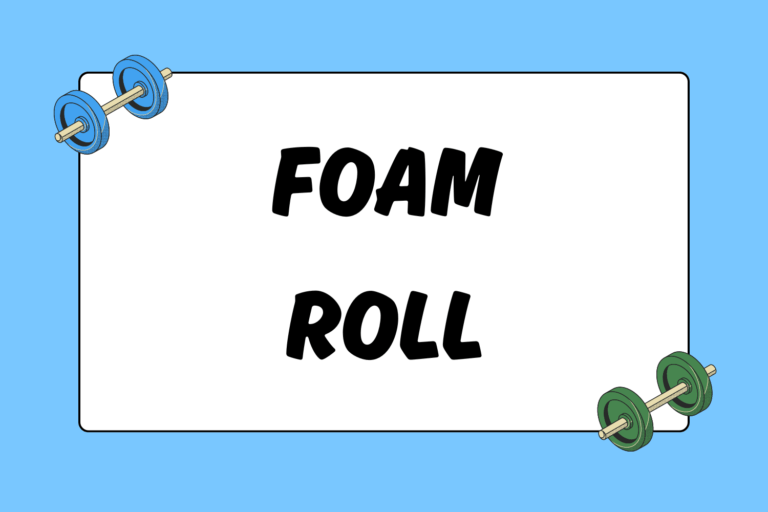The clean and jerk exercise is a two-phase lift used in the sport of Olympic-style weightlifting. Similar to the snatch, the clean and jerk is executed in two parts:
- Lifting the bar from the ground to the shoulders (the clean).
- Putting the bar overhead (the jerk).
If you’ve ever seen an Olympic weightlifter in action, their physiques rival those of Greek statues. Thick, muscular legs and back muscles are commonplace in the sport, and it’s all due to hours spent doing heavy and explosive barbell movements. This guide outlines the benefits of the clean and jerk, and it provides a step-by-step breakdown that will take your fitness to the next level.
Benefits
The “clean” portion of the lift is a staple in most athletes’ strength and conditioning programs, and it has the following benefits:
1. Improves Explosiveness & Reactivity
No coach has ever complained about an athlete being too explosive or strong, and the clean is one of the best ways to improve both of these skill-sets. Due to its explosive execution, the clean improves your reaction time, vertical jump, and sprint performance.
2. Mimicking Sport-specific Movements
The clean emphasizes full-body extension and explosive lower-body movement, and this motion carries over to many sports. The catch phase of the lift teaches athletes how to brace for impact, which is paramount for contact sports like football, martial arts, and rugby.
3. Strengthening Tendons & Ligaments
Because of the ballistic nature of the clean and jerk, the exercise strengthens many of the body’s connective tissues. This added strength reduces the likelihood of injuries and improves the body’s resilience for contact sports.
4. Mental Focus & Body Awareness
The clean and jerk is a multi-joint movement that requires a significant amount of coordination, timing, strength, and power. Because of the lift’s complex nature, it takes an exceptional amount of focus and mental toughness — especially when the weights get heavier. Some coaches compare Olympic lifts to inverted gymnastics, because they parallel the athletic attributes and total-body coordination that gymnasts require on their hands in events like vaulting and floor work.
Before You Start
Since the clean and jerk is an advanced lift that requires coordination, strength, and explosiveness, it’s important that you work on your conditioning-level and familiarize yourself with basic strength movements. If you haven’t practiced the following lifts or movements regularly, then implement them into your routine before diving into the clean and jerk. In the meantime, practice the clean and jerk technique with a wooden dowel or empty bar, and learn the proper motor patterns so you can begin adding weight to the bar.
The Deadlift
The deadlift movement is essential for the clean and jerk — especially for the first pull. The deadlift strengthens the hamstrings, glutes, and back muscles, which are necessary for keeping the spine straight throughout the first pull. Refer to the How to Deadlift guide for more details.
The Front Squat
The squat establishes proper mechanics, builds flexibility, and strengthens muscles in the hips, legs, and back. Once you’re comfortable with the basic squat, move on to the front squat variation. If wrist flexibility is an issue and you’re concerned about injury during the catch phase of the lift, then add some accessory wrist, shoulder, and upper-back mobility exercises to your routine. Refer to the How to Squat guide for more information on proper squat form and progression.
The Military Press
This movement strengthens the upper body and introduces you to over-the-head weightlifting. Familiarity with lifting a barbell over your head carries over to the “jerk” portion of the clean and jerk.
The Lunge
The lunge movement is fundamental for stability and strength in a split stance. This carries over to the “jerk” portion of the lift, where you place the bar overhead with one foot forward and one foot backward.
Raising the Bar
Now that you’re comfortable with the requisite strength requirements and applications, it’s time to go over technique.
Safety Considerations
Because of the explosive nature of the clean and jerk, it’s important that you perform the lifts on a weight-lifting platform or rubber mat. You should be able to easily drop the bar in front or behind you if you miss a lift. It’s not worth dislocating a shoulder or having the bar land on your head because you’re afraid to drop the barbell.
The First Pull
Grasp the bar with a hook grip, and position your hips above your knees with your back straight, chest up, and eyes forward. Pick a spot on the wall in front of you and focus on it — doing so helps you stay properly aligned during the lift. Initiate the movement by taking a deep breath and lifting the bar off the floor. Keep the bar close to the shins with the chest over the bar.
Hot Tip: Get Hooked!
The hook grip ensures that the bar doesn’t come out of your hands when it’s pulled overhead. To use this grip, wrap the thumb over the bar with the first two fingers wrapped over the thumb.
The Second Pull
Once the bar reaches the crease of the hips, aggressively throw the hips forward and jump upwards. Come up onto your toes, shrug your shoulders upwards, and pull the bar high, making sure to keep the bar in as close to the torso as possible. Many lifters incorrectly swing the bar out in front of their body, resulting in an arc motion instead of a relatively straight line. This arc line of travel actually limits power and can cause you to miss the catch phase of the lift.
The Catch
Once you lift the bar as high as possible, dip under the bar and catch it on your clavicles by flipping the elbows underneath and driving them high into the air. This high elbow position in the catch keeps the spine straight as you descend into the squat. From there, decelerate the bar by riding the bar down into the bottom position of the squat. When you have control of the bar in the bottom position, stand up from the squat.
If you do not have the proper flexibility to do a deep squat without rounding the spine, you should practice catching the bar higher — at the point where your spine does not round in the bottom of the squat.
The Jerk
Once you’re standing with the bar racked on your shoulders, take a deep breath and quickly dip down into a quarter-squat while keeping the spine perpendicular to the floor. Then, quickly reverse direction and drive the bar overhead by first using the legs to push upwards, and then using the arms to follow through. When the bar is suspended in air, quickly split the feet into the lunge position and catch the bar overhead. Once you stabilize the bar overhead in the split-stance position, step the front foot back halfway towards the other foot, and then step the back foot to meet the other.
Make Technique a Priority
Again, it’s essential that you practice perfect technique with a wooden dowel or empty bar before adding weight. Additionally, watching videos of elite weightlifters teaches you proper set up, timing, and execution of the full lift. Also, it’s advantageous to practice a little bit every day, rather than practicing for one hour, three times a week.





